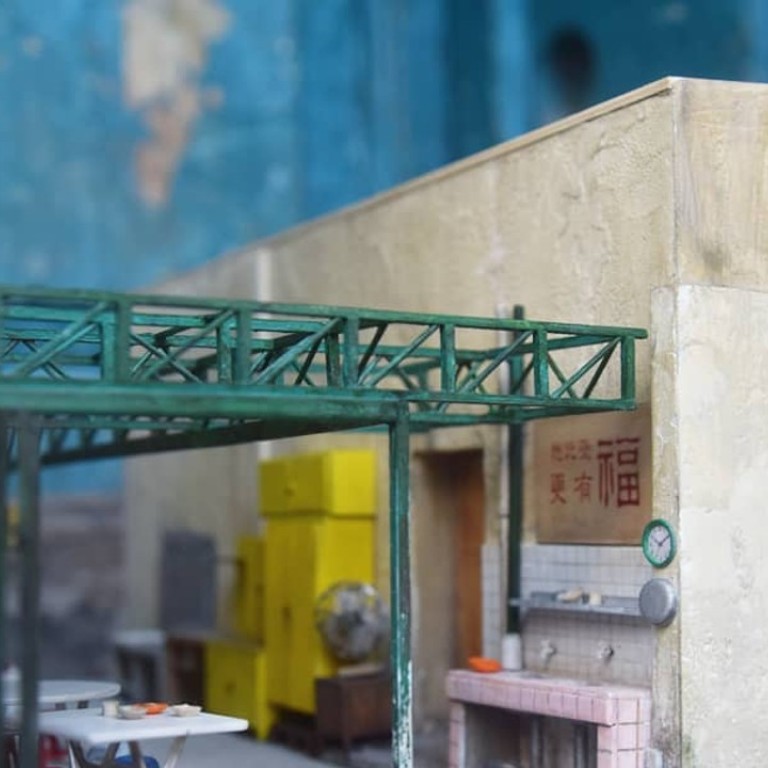
Malaysian miniature artist preserves historic Kuala Lumpur one tiny piece at a time
Lim Pui Wan creates scale models of buildings and food in Kuala Lumpur. With the development of the Malaysian capital, she believes it is essential to preserve the memories of traditional buildings
Strolling around Kuala Lumpur on her way home has always been a favourite pastime of miniature artist Lim Pui Wan.
And Lim says the best part of her regular walk around the Malaysian capital used to come when she entered Lorong Panggung near Petaling Street, where kopitiam –traditional coffee shop – had stood for 100 years.
New life breathed into Malaysian capital’s neglected old buildings
The kopitiam was always a hive of activity and Lim was captivated by its ageing charms. It sparked an interest in old buildings and a desire to explore them further.
“Old things, especially old buildings, are mystical to me and I find myself drawn to them. In my eyes, this kopitiam [was] unique because it combined residential [premises] and a coffee shop. You don’t see many such buildings in urban Kuala Lumpur any more.

“Every day as I [would] pass the building, I [would] see elderly people sitting around the tables in the kopitiam, happily chatting while enjoying cups of coffee. This scene [transported] me back to the era of my grandparents, when life was more carefree and fun.”
Old buildings are becoming increasingly scarce in Kuala Lumpur. I don’t want future generations to just hear the names of historic buildings with a vague picture of it in their minds
Lim says she had an overwhelming urge to create a miniature of the place as a keepsake. So she approached the owner to ask for details, and began work on the project.
That was October 2017, and she had no idea that the building was earmarked for demolition. In May this year, the owner contacted her to say the residents of the shophouses had been asked to move out.
“And just the other week, the owner sent me a photo showing the building had been torn down. It is no longer there. Even though I was sad, a part of me was glad that I was able to preserve it in miniature form,” she says.
Lim says she doesn’t want the same fate to befall other historic buildings in the city, which are increasingly being torn down to pave way for redevelopment, often with little regard for the preservation of memories.
“Old buildings are becoming increasingly scarce in Kuala Lumpur. I don’t want future generations to just hear the names of historic buildings with a vague picture of it in their minds. I want them to be able to see the real thing, albeit in miniature form. I want them to get to know every detail of the place,” she says.
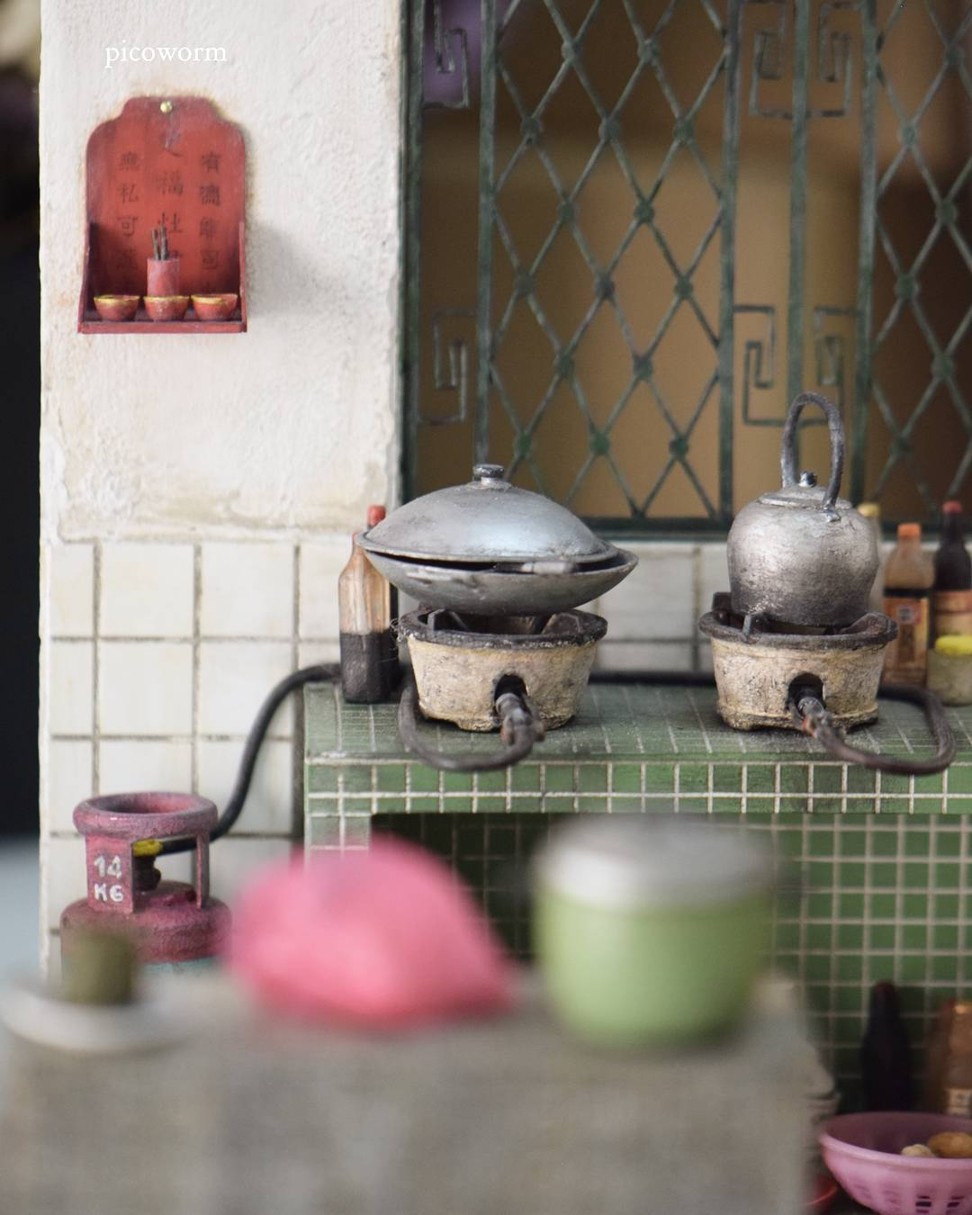
Lim says her first miniature inspired her to work on more models of old buildings and compile photos of them into a book.
“The book will take a long time to put together because I have to create the works. One work may take several months depending on the complexity. But I want to publish it so people in the future will have something to refer to,” she says.
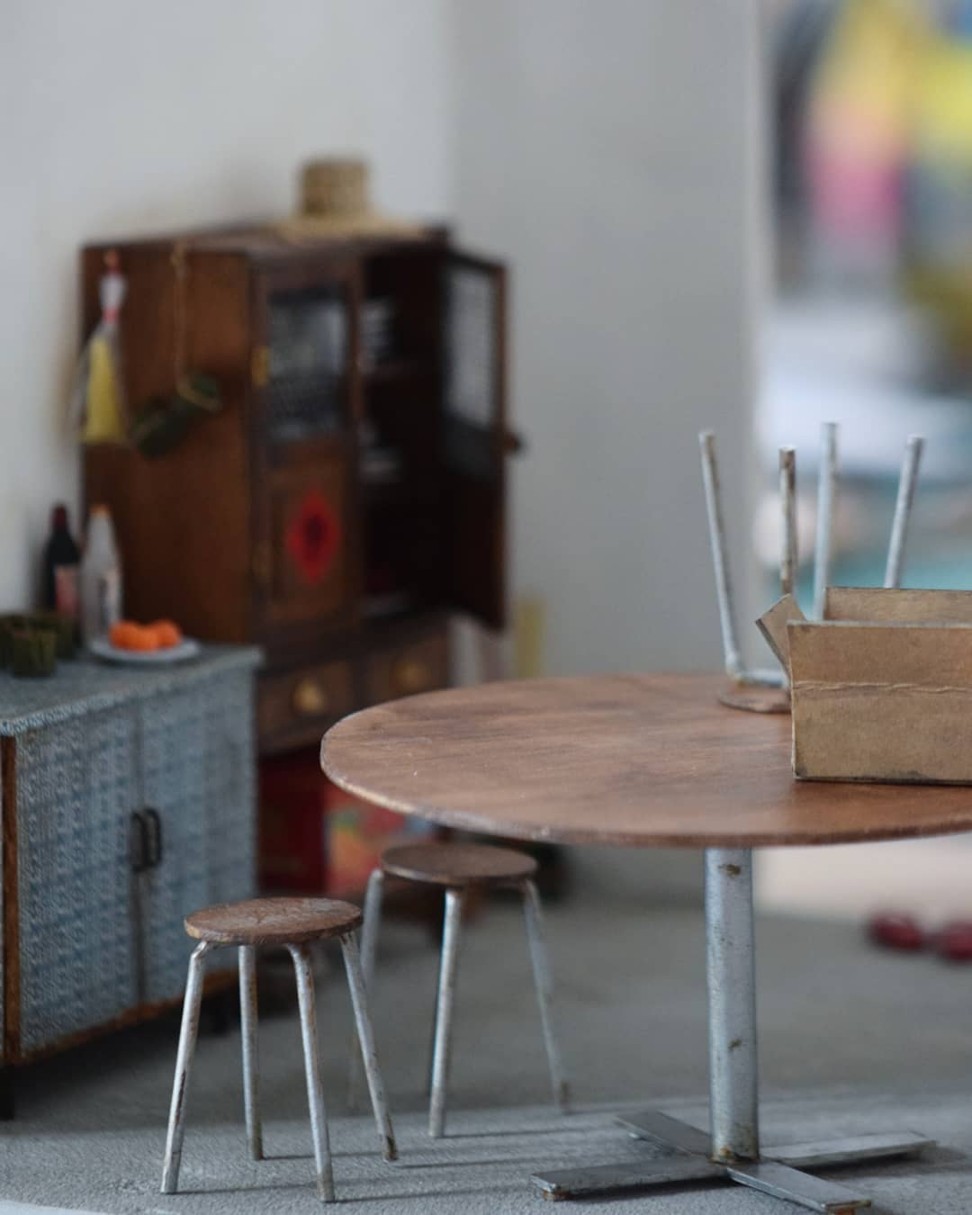
She constructs her miniatures in a studio in the heart of Kuala Lumpur. Stepping into her studio space might give visitors a feeling of how Alice in Wonderland would have felt when she tumbled down the rabbit hole.
The studio is just big enough for a couple of tables, chairs and some shelves, as if to mirror the tiny sculptures that are assembled there. It is a world in miniature.
On a high shelf in a corner of the studio, miniature wooden chairs stand in a row.
On the other end of the shelf is a replica of an old, rustic kitchen, complete with a rusty steel cabinets – palm-sized at most. On a table at the far side of the room are models, including a Hindu temple and a grocery shop.
So detailed is the artist’s workmanship that she has even reproduced the dust settling over the surfaces on her reproductions.
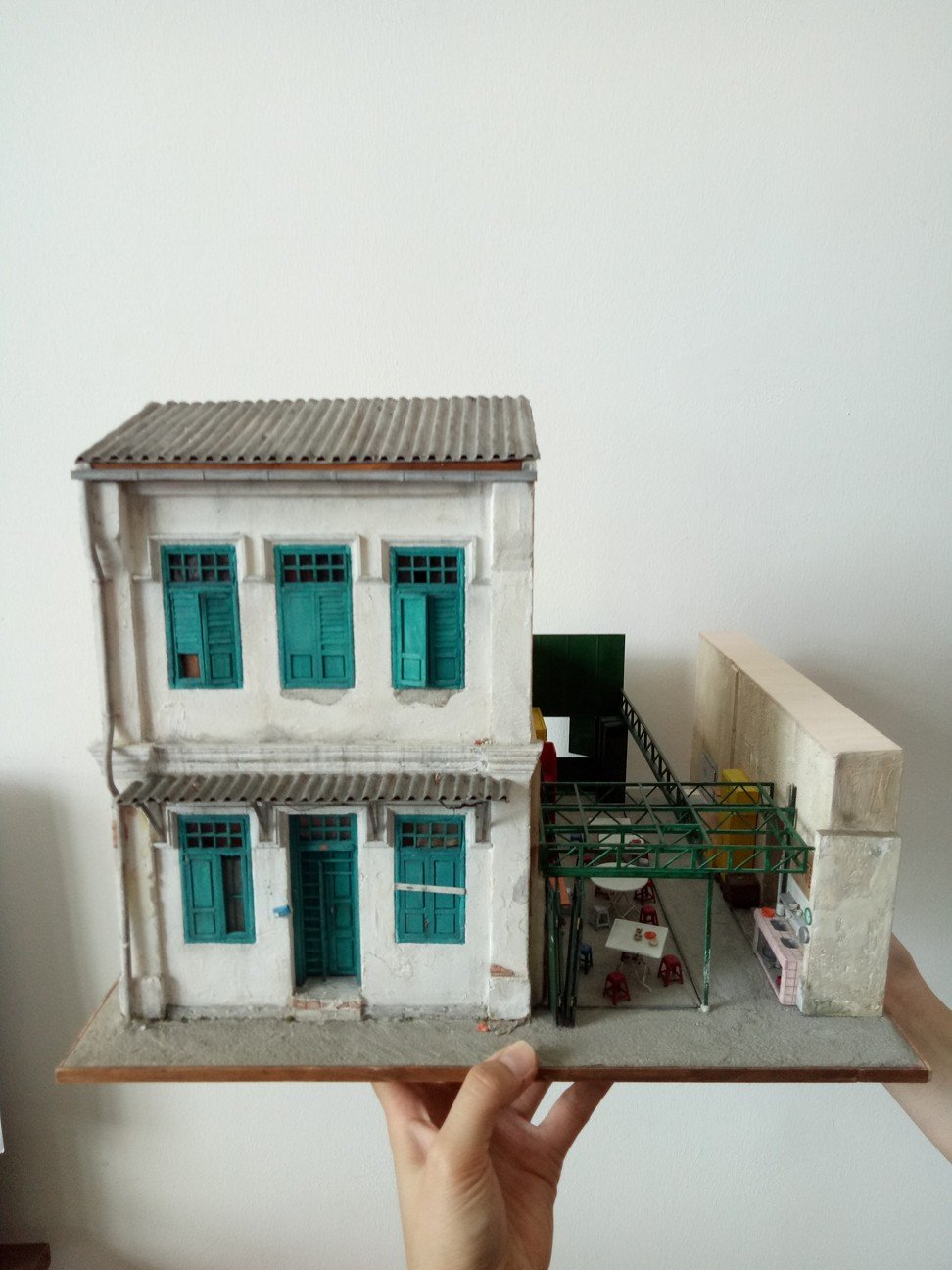
Lim discovered the world of miniatures by accident after her sister bought her a book about the craft. She was taken with the idea and started to make tiny models while she was still at school.
What started off as a hobby later turned into an obsession, and she has never looked back.
“I started with a self-learning approach,” Lim says. “I would scour the internet in search of any information about miniature art. I would search for tips to experiment with new or different materials as well as construction techniques. I joined forums. Slowly, I learned how to put together miniature things.”
Fan of Hong Kong films makes replica of old Kowloon building sight unseen, using Google Maps
As her confidence grew, Lim started to enter competitions. She won her first contest in 2012, the Dollhouse Competition organised by Dollhouse and Miniature Association of Malaysia, which gave her the boost she needed.
As people began to notice her work, Lim launched her own website and social media pages, using the name “picoworm”, to showcase and market her work.
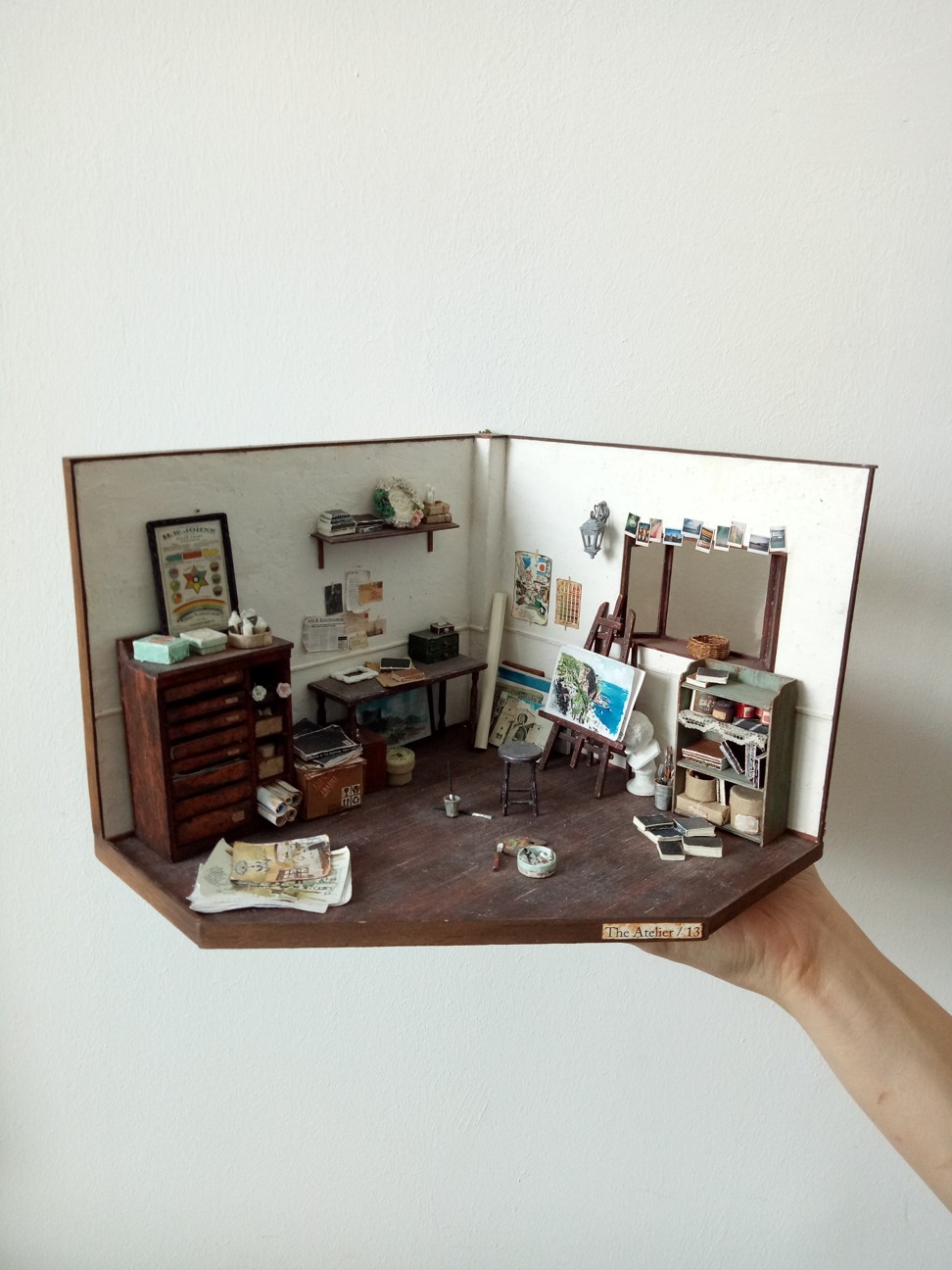
“Pico is a tremendously small unit in the metric system. ‘Worm’ is derived from the word ‘bookworm’.
The meaning behind ‘picoworm’ denotes someone who loves to devote time to making something small, and that person is me. It also features the initials of my name, P.W.,” she says with a smile.
Artist sets eyes on Hong Kong block he modelled from the web in Australia for a viral art sensation
Lim says her miniature works, especially food items such as satay, sushi and durian, garnered plenty of public interest relatively quickly on social media and she soon began receiving orders.
“It only made sense to pursue the art as my career because I was receiving lots of requests and orders. People like preserving memories and I love recreating their most treasured things or places,” she says.
“For example, one lady approached me with a request for me to create a replica of her grandmother’s old grocery shop to be presented to her grandfather on his 80th birthday. She described the shop in detail and I captured it in miniature form.”

Lim says people are keen to acquire her customised recreations, but many are also interested in learning the art themselves. This prompted her to hold her first workshop in Singapore last year.
Despite gaining popularity through her work, Lim says that she is still learning the art of making miniatures.
“I follow the work of Japanese miniature artist Tomo Tanaka a lot. His work is amazing and impressive, and I admire his attitude towards art, which inspires me to work harder. Hopefully one day I can be as good as him and inspire others,” she says.
Lim says most of her artworks are made of clay, wood or other suitable materials, depending on the type of piece.
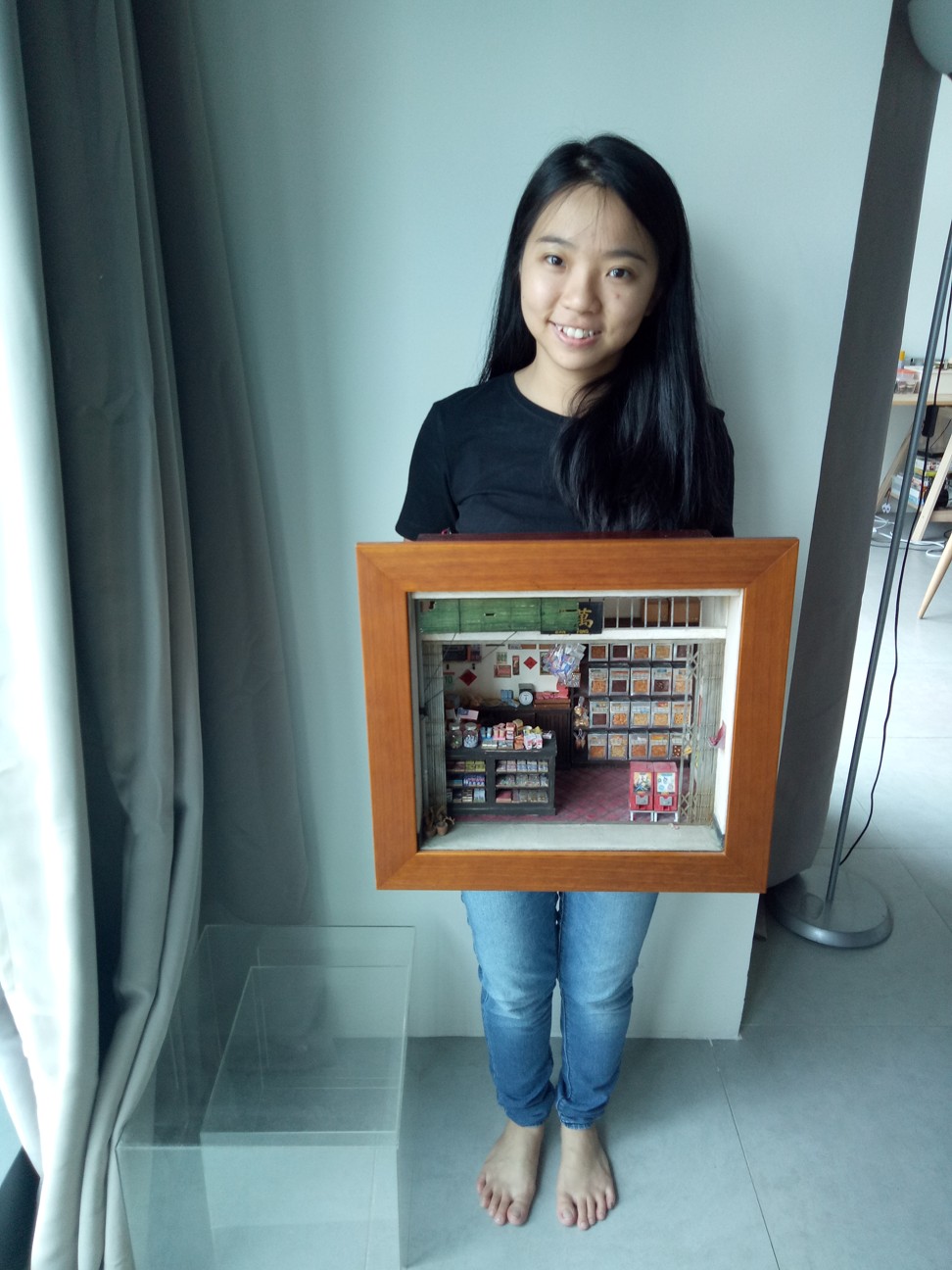
“Let’s say I am making a food miniature. This type of art is made out of clay resin. The process basically involves mixing clays of different colours, sculpting, texturing, painting, varnishing and other methods, to make the art as detailed as I can it.”
She adds that it is also important to get the proportions right. “There is a precise calculation in order to get the most accurate ratio before I even start making the miniatures. I usually make the miniatures on a 1/12 scale, which is 12 times smaller than the actual item. Sometimes the miniatures are smaller than that, at a 1/35 scale,” she says.
Lim is currently working on a project to create miniatures of historic places in Malacca, to go on display in museums in the Malaysian state. “I love working on this project because it helps preserve the memory vividly. I’m so lucky to do what I love.”
